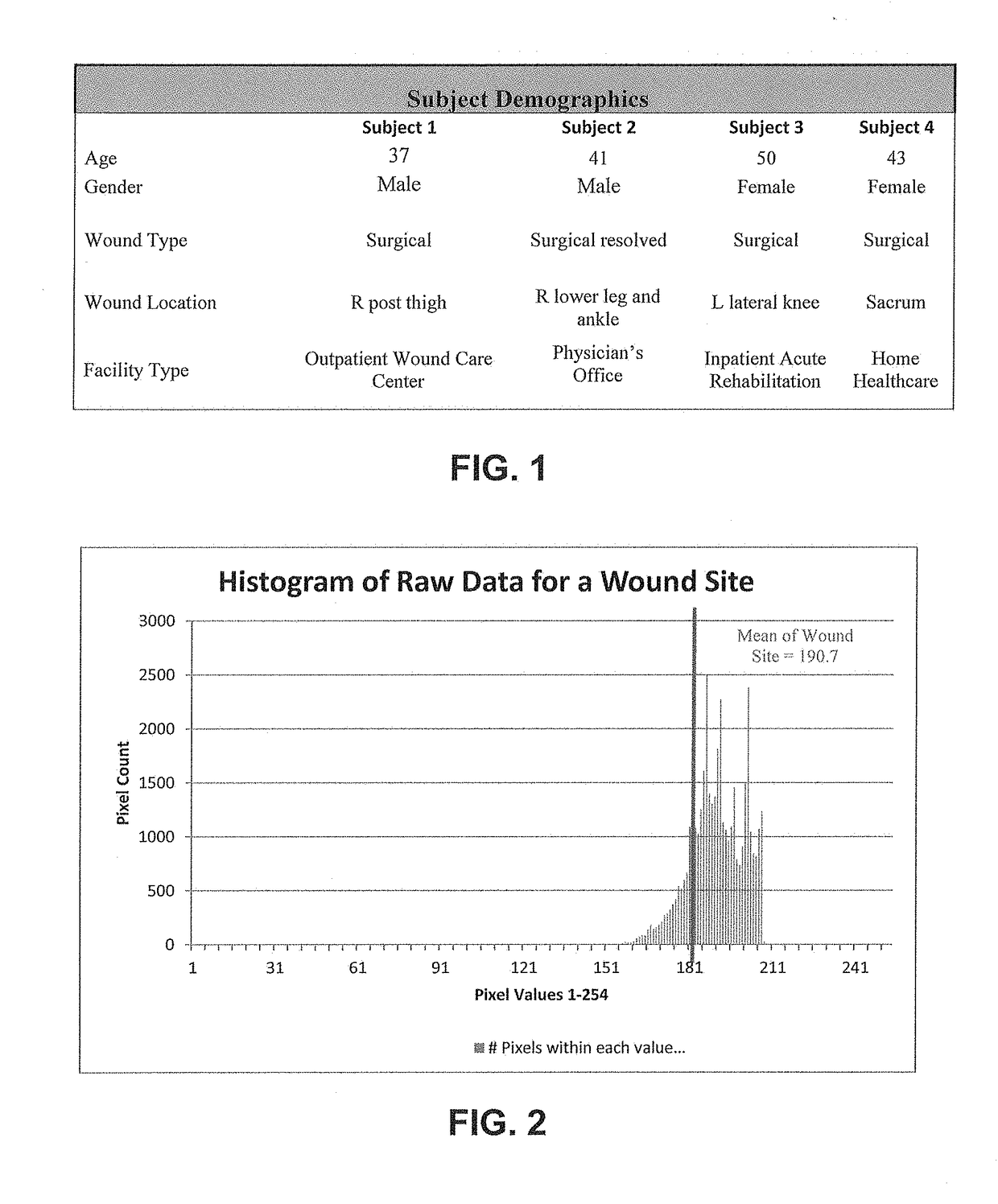Method of quantifying ischemia/perfusion and blood flow abnormalities
a technology of ischemia/perfusion and blood flow, applied in the field of thermography, can solve the problems of reducing nutrient and oxygen transport compromised, and pad can significantly reduce daily function and quality of life, and achieves the effect of no additional cost and less tim
- Summary
- Abstract
- Description
- Claims
- Application Information
AI Technical Summary
Benefits of technology
Problems solved by technology
Method used
Image
Examples
Embodiment Construction
)
[0055]The embodiments described below are not intended to be exhaustive or to limit the invention to the precise forms disclosed in the following detailed description. Rather, the embodiments are chosen and described so that others skilled in the art may appreciate and understand the principles and practices of the present invention.
[0056]The present invention will be discussed hereinafter in detail in terms of various exemplary embodiments according to the present disclosure with reference to the accompanying Figures. In the following detailed description, numerous specific details are set forth in order to provide a thorough understanding of the methods according to the present disclosure. It will be obvious, however, to those skilled in the art that these methods may be practiced without those specific details.
[0057]Thus, all of the implementations described below are exemplary implementations provided to enable persons skilled in the art to make or use the embodiments of the di...
PUM
 Login to View More
Login to View More Abstract
Description
Claims
Application Information
 Login to View More
Login to View More - R&D
- Intellectual Property
- Life Sciences
- Materials
- Tech Scout
- Unparalleled Data Quality
- Higher Quality Content
- 60% Fewer Hallucinations
Browse by: Latest US Patents, China's latest patents, Technical Efficacy Thesaurus, Application Domain, Technology Topic, Popular Technical Reports.
© 2025 PatSnap. All rights reserved.Legal|Privacy policy|Modern Slavery Act Transparency Statement|Sitemap|About US| Contact US: help@patsnap.com



